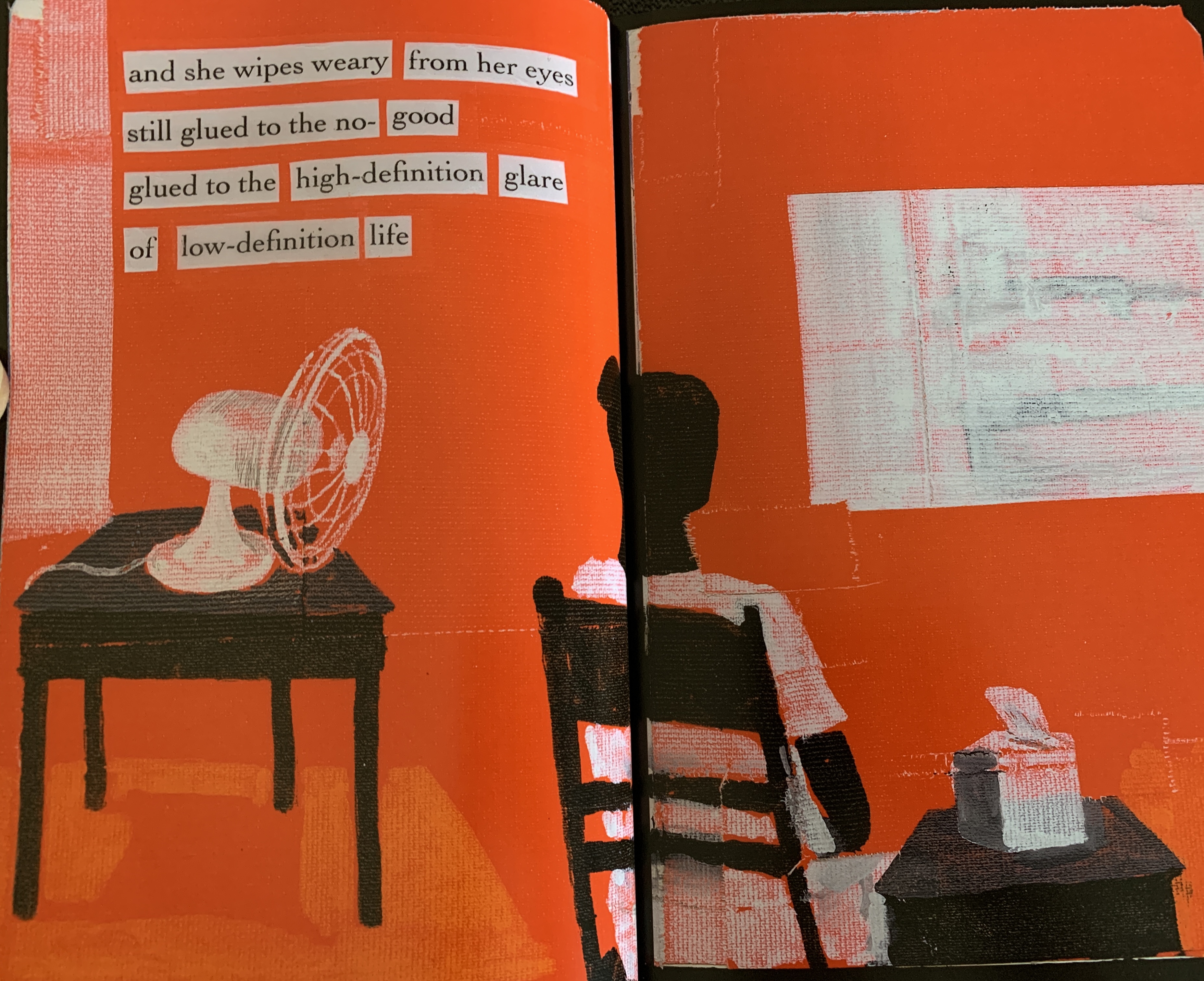
Three. That’s all it took. Whereas some books use series, some use chapters, and some use pages of text, Reyolds began this book using three powerful, long sentences to get his point across. Using his artistic talent, Jason Griffin grabbed those words and he chopped and stretched them. Inserting his special touch, Jason manipulated those words, until he was left with a book that is equally part art and poetry. To fully appreciate it, I read through it a few times.
It's the combination of art and verse that grabbed me. The erratic use of language spread across this book, I thought for sure, it had to be more than three sentences for its message was worthy of a novel. I couldn’t help but feel the emotions this young man was experiencing and identify with his frame of mind. Where is everyone? Where was his own family? His mother was physically glued to the TV, his father boxed in another room coughing, his brother lost inside his video games and the telephone was connected to his sister’s ear. But, really where were they? He’s looking for a sign in these individuals as his world spins relentlessly. There’s too much going on and not enough solid answers, as the state of the world, the pandemic and his own world changes. Why won’t his parents change the channel? Why doesn’t anyone change the channel? An excellent hard-hitting question.
The contrasting use of color, the edgy images that spread across the page with the limited use of language allow this book to tap into your soul. I felt energized yet also saddened as the truth this book conveyed hit me. This is not a book you should rush through but slow-down, appreciate those three sentences and the art that surrounds them. Make sure you read Reynolds and Griffin section in the back of the book titled, “Is Anyone Still Here?” I highly recommend this book.





 Log in with Facebook
Log in with Facebook 
























